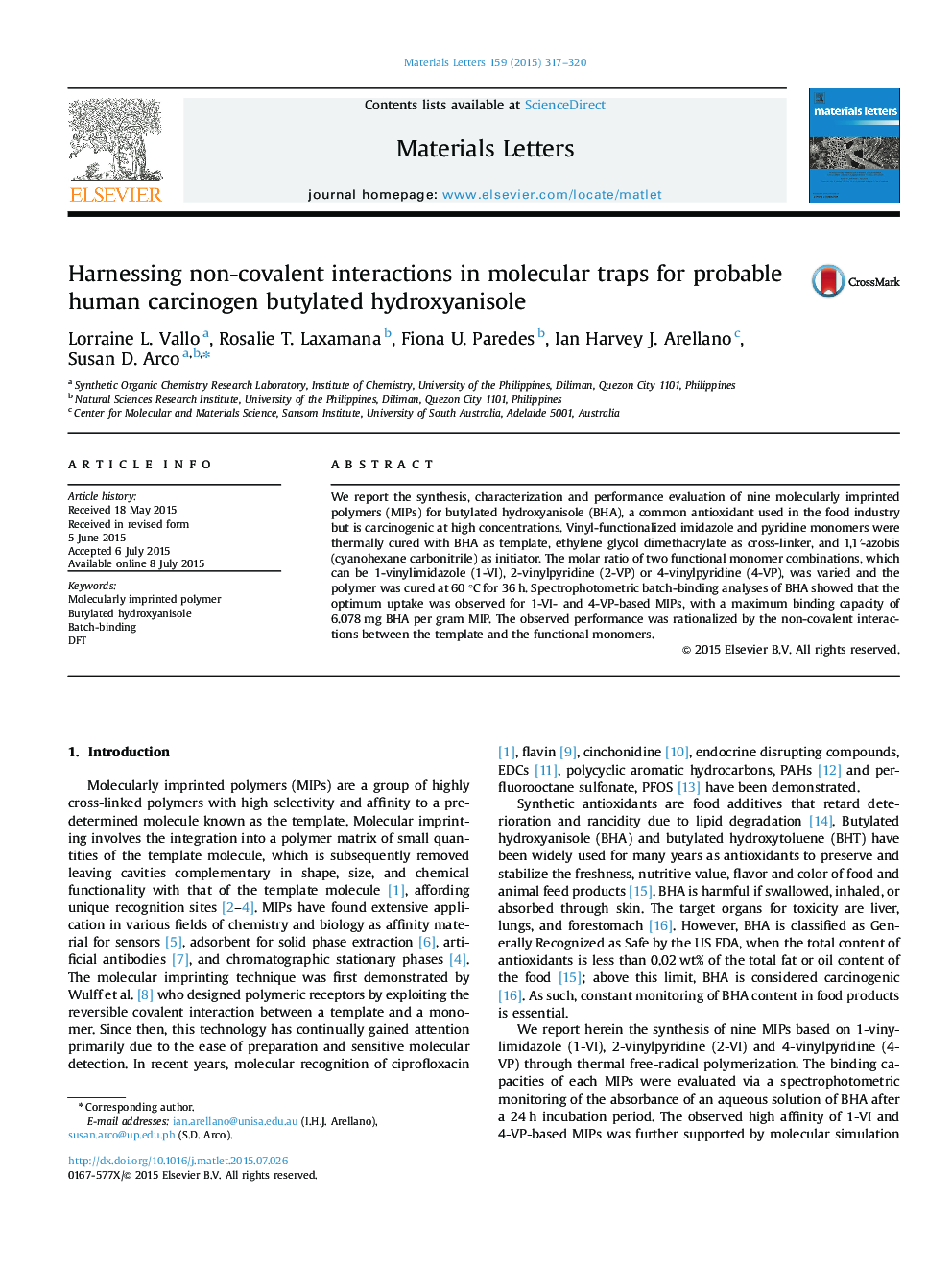| کد مقاله | کد نشریه | سال انتشار | مقاله انگلیسی | نسخه تمام متن |
|---|---|---|---|---|
| 1642310 | 1517229 | 2015 | 4 صفحه PDF | دانلود رایگان |
• Imidazole and pyridine decorated BHA-imprinted polymers were synthesized.
• High binding capacity was observed in 1-VI and 4-VP systems.
• DFT conformational analyses strongly supports binding capacities.
• Complementary non-covalent interactions promoted high binding capacity
We report the synthesis, characterization and performance evaluation of nine molecularly imprinted polymers (MIPs) for butylated hydroxyanisole (BHA), a common antioxidant used in the food industry but is carcinogenic at high concentrations. Vinyl-functionalized imidazole and pyridine monomers were thermally cured with BHA as template, ethylene glycol dimethacrylate as cross-linker, and 1,1ʹ-azobis(cyanohexane carbonitrile) as initiator. The molar ratio of two functional monomer combinations, which can be 1-vinylimidazole (1-VI), 2-vinylpyridine (2-VP) or 4-vinylpyridine (4-VP), was varied and the polymer was cured at 60 °C for 36 h. Spectrophotometric batch-binding analyses of BHA showed that the optimum uptake was observed for 1-VI- and 4-VP-based MIPs, with a maximum binding capacity of 6.078 mg BHA per gram MIP. The observed performance was rationalized by the non-covalent interactions between the template and the functional monomers.
Figure optionsDownload as PowerPoint slide
Journal: Materials Letters - Volume 159, 15 November 2015, Pages 317–320
